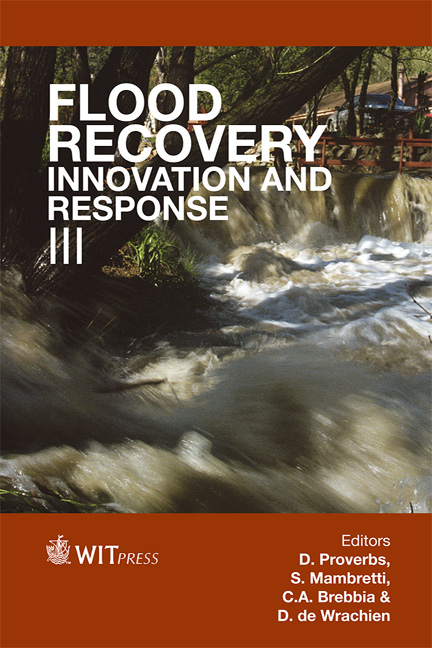Damage And Loss Prediction Model Considering Inundation Level, Flow Velocity And Vulnerability Of Building Types
Price
Free (open access)
Transaction
Volume
159
Pages
13
Page Range
53 - 65
Published
2012
Size
1406 kb
Paper DOI
10.2495/FRIAR120051
Copyright
WIT Press
Author(s)
H. Maiwald & J. Schwarz
Abstract
Reliable prognoses of building damage caused by flood impact require realistic relationships between action and damage or loss describing parameters. Due to the fact that commonly applied damage functions are related to the different usage classes (i.e. private housing), the required differentiation according to the parameters on the resistance side is still missing and further impact parameters like flow velocity remain unconsidered. On the basis of the Earthquake Damage Analysis Center (EDAC) flood database (including different datasets collected after the 2002 flood in Saxony), a method to determine the structural damage and the losses for any given flood scenario was developed. The key elements of the developed method are the engineered evaluation and categorization of the existing building stock, the definition of five damage grades with respect to the observed damage patterns and the classification of building types into vulnerability classes (and the consideration of the inherent scatter). Specific Functions enabling the calculation of damage grades and the loss assessment in separate steps of the same procedure. Specific Vulnerability Functions (SVF) are related to the inundation level or additionally the flow velocity (action side), and the predominant building types or the vulnerability classes (resistance side). Specific Damage Functions (SDF) can calculate the expected losses directly under consideration of the inundation level and the predominant building types (SDF of Type 1a) or the assigned vulnerability classes (SDF of Type 1b). SDF of Type 2 transfers the damage grades into loss statements. The developed tools are applied to the reinterpretation of the August 2002 flood damage. Results are presented for different study areas on a micro-scale level. In all cases, remarkably good agreement between the predicted and the reported losses can be
Keywords
damage grades, flood damage, damage functions, flow velocity, loss estimation, specific energy height, vulnerability classes, vulnerability functions





